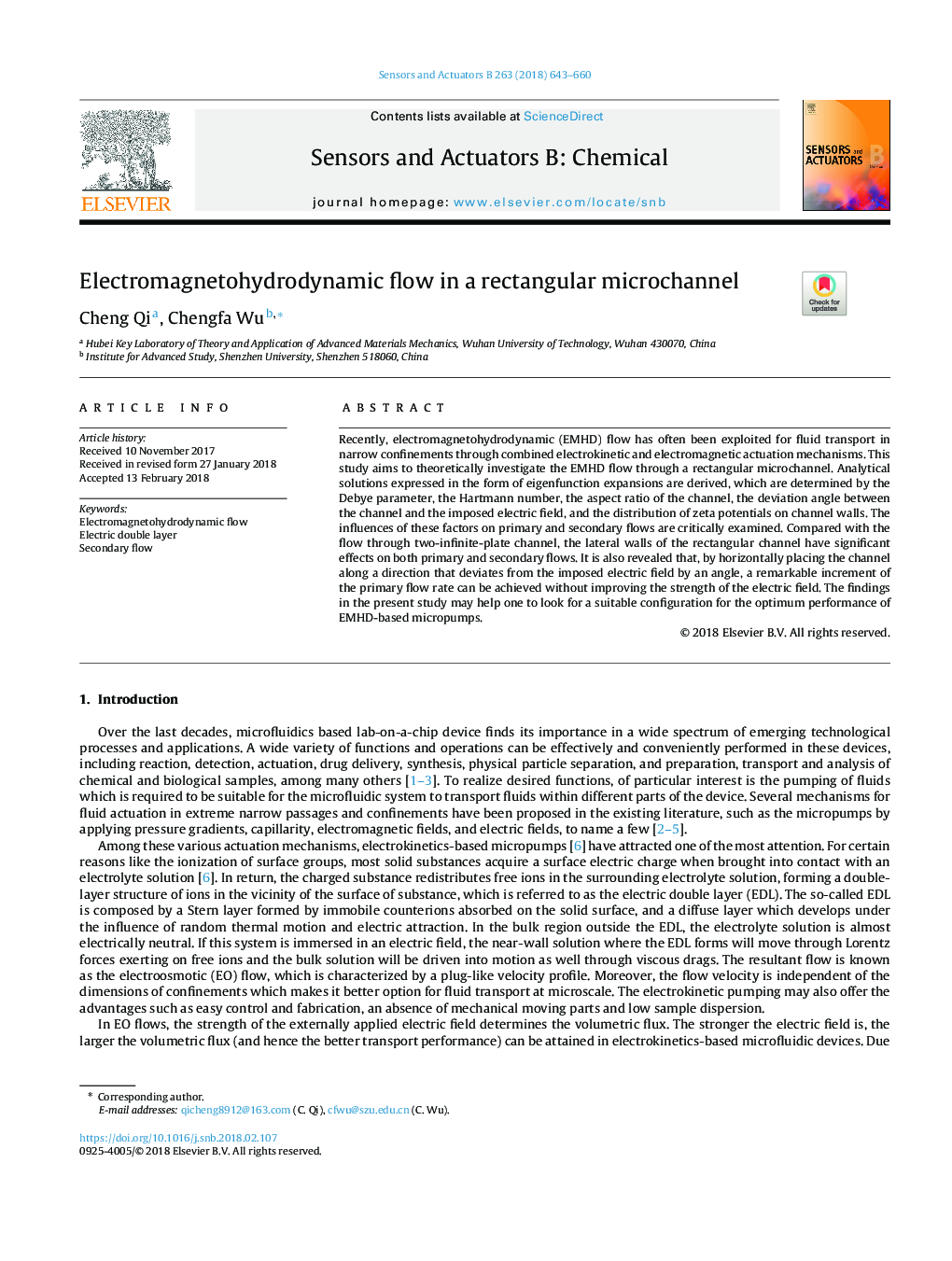| Article ID | Journal | Published Year | Pages | File Type |
|---|---|---|---|---|
| 7140578 | Sensors and Actuators B: Chemical | 2018 | 18 Pages |
Abstract
Recently, electromagnetohydrodynamic (EMHD) flow has often been exploited for fluid transport in narrow confinements through combined electrokinetic and electromagnetic actuation mechanisms. This study aims to theoretically investigate the EMHD flow through a rectangular microchannel. Analytical solutions expressed in the form of eigenfunction expansions are derived, which are determined by the Debye parameter, the Hartmann number, the aspect ratio of the channel, the deviation angle between the channel and the imposed electric field, and the distribution of zeta potentials on channel walls. The influences of these factors on primary and secondary flows are critically examined. Compared with the flow through two-infinite-plate channel, the lateral walls of the rectangular channel have significant effects on both primary and secondary flows. It is also revealed that, by horizontally placing the channel along a direction that deviates from the imposed electric field by an angle, a remarkable increment of the primary flow rate can be achieved without improving the strength of the electric field. The findings in the present study may help one to look for a suitable configuration for the optimum performance of EMHD-based micropumps.
Keywords
Related Topics
Physical Sciences and Engineering
Chemistry
Analytical Chemistry
Authors
Cheng Qi, Chengfa Wu,
